flowering dogwood (Cornus florida)
Cornaceae, the dogwood family
How to recognize flowering dogwood. Dogwood trees and shrubs (except for one weird species aptly called “alternate-leaved dogwood, Cornus alternifolia) have oppositely arranged leaves that are simple in complexity, with entire margins.
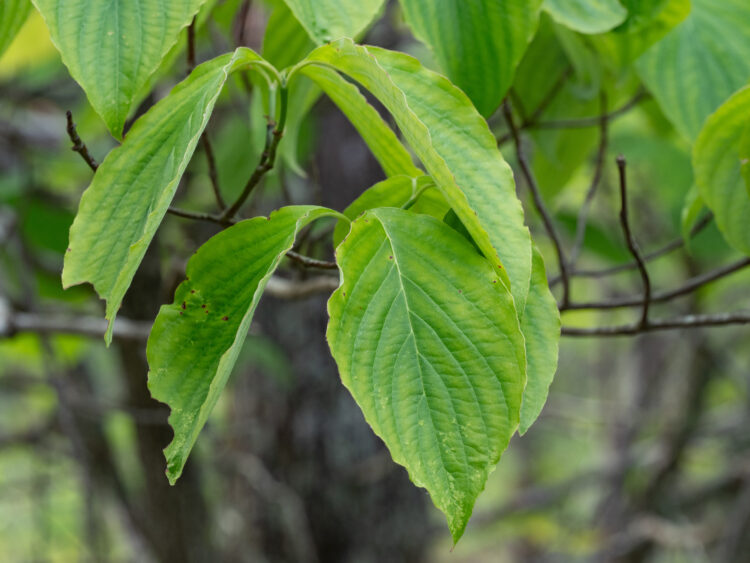
Flowering dogwood has opposite leaves.
Amaze your friends! Try the “dogwood leaf trick” by snapping a leaf, gently, just a little bit, across the grain of the veins. The halves stay connected. It’s magic!

The dogwood leaf trick!
What could be more fun?
It’s the magic of plant anatomy, that is. If you look through a microscope at the little strands holding the leaf halves together, you will see the spiral cell wall thickenings that are characteristic of the water-carrying tissue called xylem. These thickenings keep the cells from collaping under the negative pressure of transpiration.
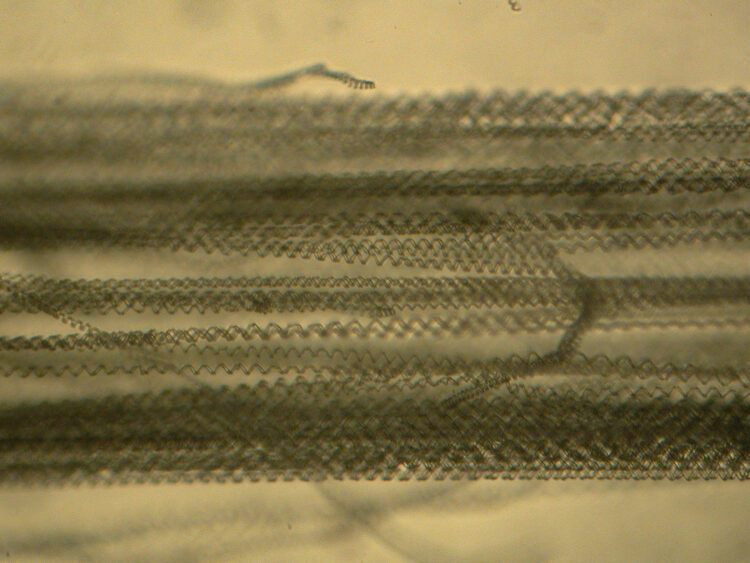
Dogwood xylem through a microscope.
The species called “flowering dogwood” (Cornus florida) is an understory tree; its habitat is in woods beneath other trees. The blooming display is quite conspicuous in early spring.
Flower and fruits. The name “flowering dogwood” is a bit misleading. Indeed, all dogwood species produce flowers, but they are small. Flowering dogwood is called that because its blooms are very conspicuous. They are packed into little head-like clusters surrounded by huge bracts that are actually greatly expanded flower bud scales.
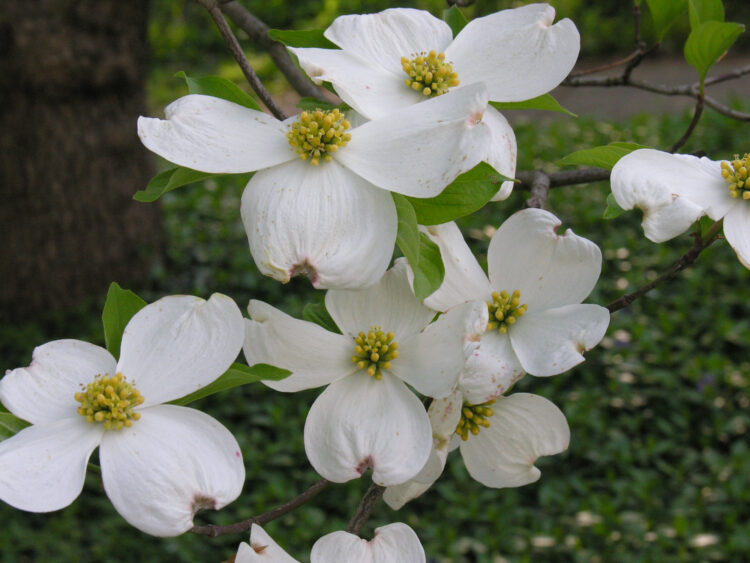
Flowering dogwood blooms in spring and is quite conspicuous.
There are over a dozen inconspicuous flowers in each cluster. You can see that each one has 4 petals and 4 stamens

Flowering dogwood “flowers” are actually head-like clusters of many small flowers.
May 3, 2005, Franklin County, Ohio.
Flowering dogwood fruits are red drupes clustered in similar fashion to the flowers that produced them.

Flowering dogwood in fruit.
September 21, 2005, Franklin County, Ohio.
Bark, The bark of flowering dogwood is (worse than its bite?) dark, and broken up into small rectangular blocks. (The inner bark is bitter and was used as a substitute for quinine, a malaria treatment, and Native Americans used bark of the roots to make a red dye.)
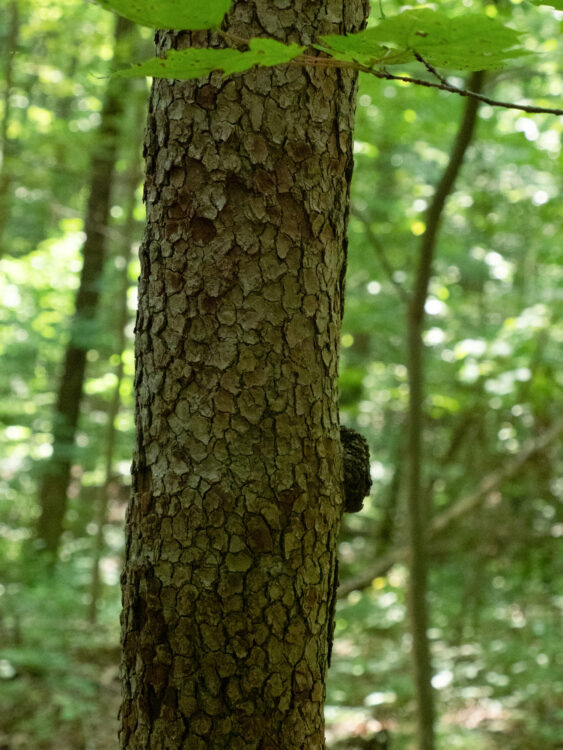
Flowering dogwood bark.
In the winter. The twigs are slender and curved, with opposite leaf scars and the lateral buds, the latter so small as to be indiscernible. The m&m-shaped flower buds, covered with the 4 bracts that expand to look like huge petals, are prominent.
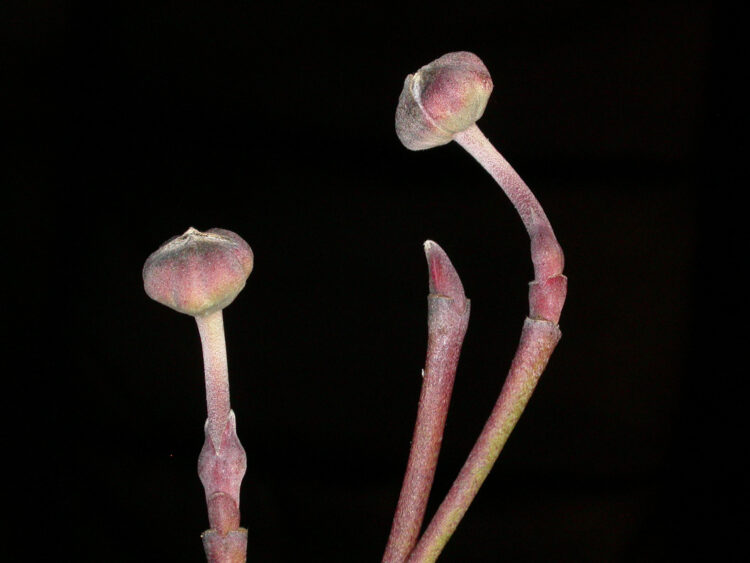
Flowering dogwood flower buds are candy-shaped.
Where to find flowering dogwood. E. Lucy Braun, in The Woody Plants of Ohio (1961, 1989; The Ohio State University Press) tells us that flowering dogwood is “One of our showiest trees in flower, in fruit, and in autumn coloring. Common and widespread, occurring in the open in old fields and along fence-rows, and in woods, sometimes forming a lower layer in oak and oak-pine woods.
Scanned Image from an Old Book
(Flora of West Virginia, by P.D. Strausbaugh and Earl L. Core
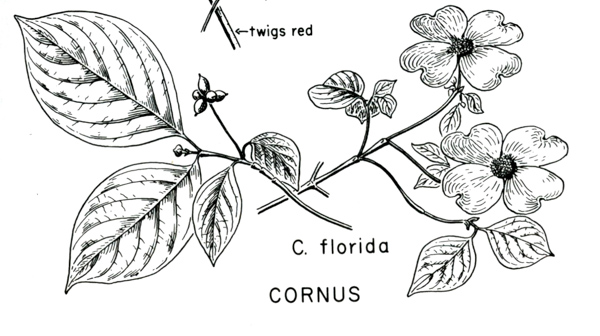
Ooh, ooh. I have a question.
The red fruits on flowering dogwood look like berries. Are they berries?
The berry-like fruits of dogwoods and many other trees and shrubs (viburnums and poison ivy are other examples) are drupes. Drupes are single-seeded fruits with a bony “endocarp” covering the seed, surrounded by a fleshy “exocarp.” By contrast, berries are fleshy throughout.

